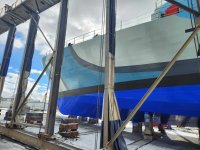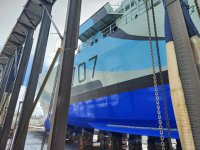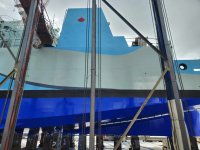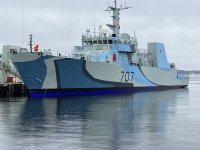Only half the MCDVs have the water mist system installed and STW; the rest need completed to bring the ships up to SOLAS. It was a weird delivery thing where it was only built to class for machinery and hull but not fire, and got overlooked for 20 years because people kept insisting it was 'built to class' until they actually asked LR. For whatever reason that has more weight then the assessment from the actual fire and DC LCMMs, who are actually SMEs in the area, compared to the class societies who have no actul SME on fire or DC and simply intepret the IMO and class rules (that the LCMMs also understand). It's been flagged as a 'must complete EC' though and will be tracked on the upcoming certificates for bringing the MCDVs into class, but we've had to explain the 'why' numerous times, and expect we'll keep have to justify why the systems have to be installed and the system operational to stay within class. (Essentially without it the design doesn't meet the IMO FSS code, which is required to meet SOLAS for the fire notation)
Fine water mist and water mist are interchangable terms in the RCN. On the standards side the differentiation is between sprinklers (NFPA 13) and water mist systems (NFPA 750).
For whatever reason, we use 'fine water mist' as our standard term, which was probably just used by the designer when we got it on the CPFs and it stuck. I find it useful to keep using 'fine' though because it helps emphasize that it's a lot different then what you would get from a sprinkler head, but in general they are all designed to meet NFPA 750, and the medium pressure systems on the MCDVs still make a pretty fine mist.
If you are curious there is a really good explanation on the NFPA website, which is a lot more neutral compared to some of the OEMs info. In general though the finer the droplet size the more complicated and expensive the system will be to buy/maintain and the cleaner the water source needs to be so always trade offs when selecting something.
https://www.nfpa.org/news-blogs-and-articles/blogs/2022/06/24/water-mist-systems-overview
Hi-Fog reps seems particularly aggresive at spreading some mis-information on this side of things but there is a really good reason that water mist in general, and hi-fog in particular aren't even on the radar for replacing halon on ships; they simply take up way more room and add a lot of maintenance. Our best bet for retrofitting halon is generally Novec (which has the same footprint for halon for cylinders, and just adds some small cylinders for propellant) or some of the dry chem systems, but for the MCDVs the water mist system on the machinery spaces will work great.






